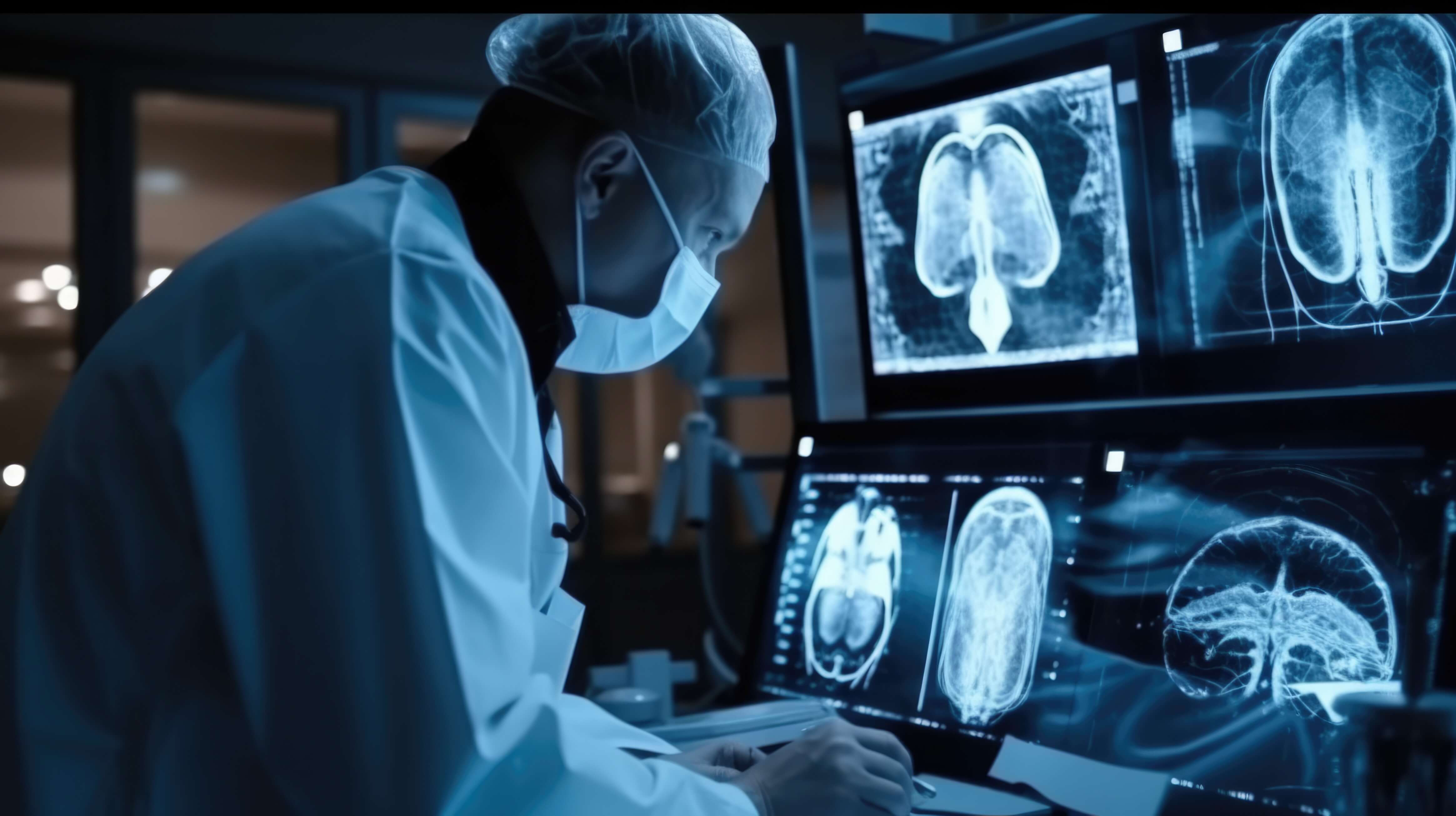Artificial Intelligence | Healthcare
AI Technologies Trending in Healthcare
Read Time 4 mins | Written by: Anuj Kharnal

Artificial intelligence (AI) is transforming the healthcare industry in various ways, from improving diagnosis and treatment to enhancing patient experience and reducing costs. In this blog post, we will explore some of the AI technologies that are trending in healthcare and how they are impacting the sector.
Natural Language Processing (NLP)
NLP is the branch of AI that deals with understanding and generating natural language, such as speech and text. NLP can help healthcare providers and patients communicate more effectively, access relevant information, and automate tedious tasks. Some of the applications of NLP in healthcare are:
Chatbots and virtual assistants
These are software programs that can interact with users using natural language, either through text or voice. They can provide information, answer queries, book appointments, remind patients of medications, and offer emotional support. For example, Babylon Health is a chatbot that can triage symptoms, provide medical advice, and connect users with doctors. Another example is Ada Health, a chatbot that can assess health conditions, suggest possible causes, and recommend next steps.
Clinical documentation
This is the process of recording patient data and medical notes in electronic health records (EHRs). NLP can help automate this process by extracting key information from speech or text, such as diagnoses, medications, allergies, and procedures. This can save time, improve accuracy, and reduce errors. For example, Nuance is a company that provides speech recognition and natural language understanding solutions for clinical documentation. Another example is M*Modal, a company that provides conversational AI solutions for clinical documentation improvement.
Text mining and analysis
This is the process of extracting insights from large volumes of unstructured text data, such as medical literature, research papers, social media posts, and patient feedback. NLP can help analyze this data and discover patterns, trends, correlations, and anomalies. This can help generate new knowledge, improve decision making, and enhance patient care. For example, IBM Watson is a platform that uses NLP to analyze text data and provide evidence-based answers to clinical questions. Another example is Roam Analytics, a company that uses NLP to extract insights from biomedical text data.
Computer Vision (CV)
CV is the branch of AI that deals with understanding and generating visual information, such as images and videos. CV can help healthcare providers and patients diagnose diseases, monitor conditions, and perform surgeries. Some of the applications of CV in healthcare are:
Medical imaging
This is the process of creating images of the internal structures and functions of the human body using various modalities, such as X-ray, ultrasound, MRI, CT scan, and PET scan. CV can help analyze these images and detect abnormalities, such as tumors, fractures, lesions, and infections. This can improve accuracy, speed up diagnosis, and reduce radiation exposure. For example, Google Health is a project that uses CV to detect breast cancer from mammograms. Another example is Arterys, a company that uses CV to analyze medical images from various modalities and provide insights for diagnosis and treatment.
Remote monitoring
This is the process of tracking the health status and behavior of patients outside of clinical settings using wearable devices or cameras. CV can help monitor vital signs, such as heart rate, blood pressure, oxygen saturation, and temperature.
It can also detect activities, such as walking, sleeping, eating, and falling. This can provide real-time feedback, alert caregivers in case of emergencies, and encourage healthy habits. For example, CarePredict is a company that uses CV to monitor seniors' activities and well-being. Another example is Binah.ai, a company that uses CV to measure vital signs from facial video.
Surgical robotics
This is the process of performing surgeries using robotic systems that are controlled by surgeons or operate autonomously. CV can help guide these systems and provide high-resolution images of the surgical site. It can also assist with navigation, manipulation, and coordination of surgical instruments. This can improve precision, reduce complications, and shorten recovery time.
For example, Intuitive Surgical is a company that develops the da Vinci surgical system, a robotic platform that uses CV to perform minimally invasive surgeries. Another example is Vicarious Surgical, a company that uses CV to enable
virtual reality-assisted robotic surgeries.
Machine Learning (ML)
ML is the branch of AI that deals with learning from data and making predictions or decisions based on it. ML can help healthcare providers and patients discover patterns, optimize outcomes, and personalize care. Some of the applications of ML in healthcare are:
Predictive analytics
This is the process of using historical data to forecast future events or outcomes, such as disease progression, hospital readmission, or mortality risk. ML can help identify risk factors, provide early warning signs, and recommend preventive actions. This can improve quality of care, reduce costs, and save lives. For example, Epic is a company that provides a predictive analytics platform
that uses ML to assess patient risk and suggest interventions. Another example is ClosedLoop.ai, a company that uses ML to provide a comprehensive healthcare AI platform that can predict various outcomes and optimize care delivery.
Drug discovery
This is the process of finding new or improved drugs for treating diseases or conditions. ML can help accelerate this process by screening large databases of compounds, simulating molecular interactions, and designing novel molecules. This can reduce time, cost, and failure rate of drug development. For example, BenevolentAI is a company that uses ML to discover new drugs for various diseases, such as Parkinson's, ALS, and COVID-19. Another example is Atomwise, a company that uses ML to design new molecules for drug discovery
and optimization.
Personalized medicine
This is the process of tailoring medical treatment to the individual characteristics of each patient, such as genetic makeup, environmental factors, and lifestyle preferences. ML can help achieve this goal by analyzing large and complex data sets, such as genomic data, biomarkers, and electronic health records. This can enable more accurate diagnosis, more effective therapy, and better outcomes. For example, Tempus is a company that uses ML to provide personalized cancer care based on genomic and clinical data. Another example is OneOme, a company that uses ML to provide pharmacogenomic testing and analysis that can guide prescription decisions.
Conclusion
AI is revolutionizing the healthcare industry by enabling new and improved ways of delivering care, improving outcomes, and reducing costs. The technologies discussed in this blog post are just some of the examples of how AI is impacting healthcare today and in the future. As AI continues to advance and evolve, we can expect to see more innovations and applications that will transform healthcare for the better.

